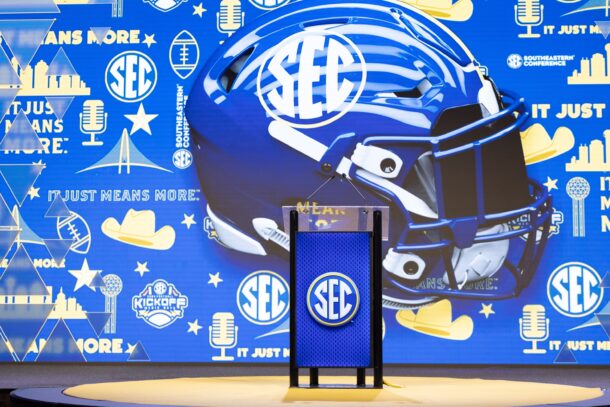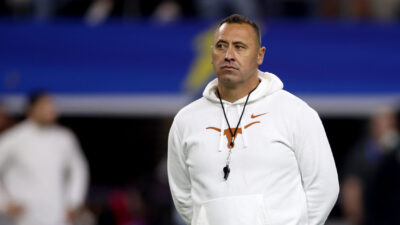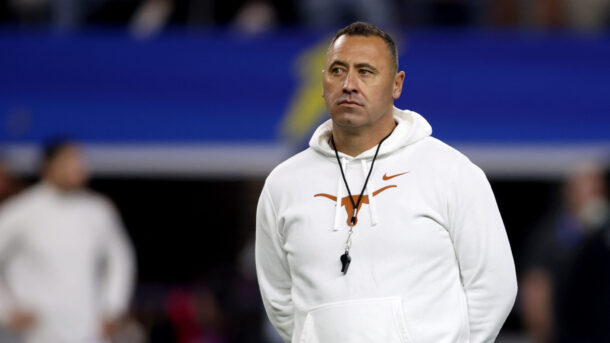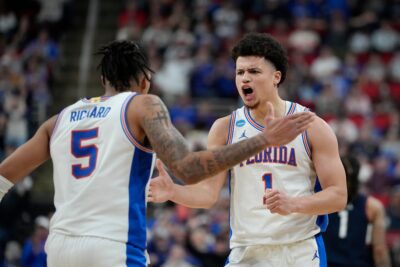Ad Disclosure
As part of an ongoing dialogue about how much athletic department money should trickle down to college athletes, the so-called “power conferences” approved a measure in January that allows universities to include “full cost of attendance” within athletic scholarships.
The latest change still is subject to intense debate, legislation and potential legal rulings. But for now, at least, SEC schools are allowed to disseminate more money to student-athletes. At Tennessee, for example, football players will get more than $5,000 per year in spending money.
A traditional “full” athletic scholarship covers tuition, fees, room and board, and books. But universities often advertise a “full cost of attendance” price that estimates out-of-pocket expenses like cell phones and travel. Some private institutions intentionally low-ball that number to avoid sticker shock with prospective students.
Boston College, for example, used to provide athletic scholarships worth $61,622. The school’s official “cost of attendance” is just $63,022, so the football team can only offer its athletes a stipend of $1,400 per year.
“Boston College voted against the cost-of-attendance measure at this year’s NCAA convention (in January),” the Chronicle of Higher Education reported. “It was the lone dissenter, citing concerns about recruiting advantages that certain institutions would gain as a result of the change.”
The result with the new rule is that the power-conference athletic programs can offer a spending allowance every semester. Many of the SEC schools will see the largest increase in the monetary value of their athletic scholarships, including the new stipend.
At $5,666 per year, Tennessee can provide the largest stipend to student-athletes under the new rules, or about $630 per month for out-of-pocket items. That’s a pretty big allowance for college students who already have everything paid for that’s school-associated.
Seven SEC schools rank in the Top 20 for most additional money they’re allowed to provide. Auburn University ($5,586), and Mississippi State ($5,126) are near the top as well.
Here’s a look at some of the numbers, according to the Chronicle of Higher Education. Some of the figures are estimated.
| Institution | Old Scholarship | New Scholarship | Difference |
|---|---|---|---|
| Tennessee | $23,710 | $29,376 | $5,666 |
| Auburn | $23,578 | $29,164 | $5,586 |
| Louisville | $19,142 | $24,344 | $5,202 |
| Mississippi State | $17,294 | $22,420 | $5,126 |
| Texas Tech | $18,944 | $24,044 | $5,100 |
| Penn State | $29,810 | $34,598 | $4,788 |
| TCU | $50,940 | $55,640 | $4,700 |
| Oklahoma | $19,341 | $23,955 | $4,614 |
| Oklahoma State | $18,180 | $22,740 | $4,560 |
| Ole Miss | $18,204 | $22,704 | $4,500 |
| Wisconsin | $20,678 | $24,994 | $4,316 |
| Texas | $21,552 | $25,862 | $4,310 |
| South Carolina | $21,414 | $25,565 | $4,151 |
| Kansas State | $18,194 | $22,306 | $4,112 |
| Arkansas | $19,064 | $23,066 | $4,002 |
| Florida State | $17,800 | $21,684 | $3,884 |
| Baylor | $50,278 | $54,160 | $3,882 |
| Nebraska | $19,762 | $23,448 | $3,726 |
| Missouri | $21,040 | $24,704 | $3,664 |
| Clemson | $23,304 | $26,912 | $3,608 |
| Utah | $19,448 | $23,022 | $3,574 |
| Cal | $28,616 | $32,168 | $3,552 |
| Washington State | $24,634 | $28,176 | $3,542 |
| Arizona State | $21,851 | $25,209 | $3,358 |
| Florida | $17,230 | $20,550 | $3,320 |
| Arizona | $21,900 | $25,200 | $3,300 |
| Pitt | $29,024 | $32,324 | $3,300 |
| Maryland | $21,342 | $24,504 | $3,162 |
| LSU | $24,192 | $27,288 | $3,096 |
| Kansas | $17,288 | $20,364 | $3,076 |
| Indiana | $21,382 | $24,418 | $3,036 |
| Rutgers | $27,012 | $29,933 | $2,921 |
| Alabama | $24,542 | $27,434 | $2,892 |
| Miami | $59,162 | $61,942 | $2,780 |
| Vanderbilt | $61,470 | $64,250 | $2,780 |
| Virginia Tech | $20,960 | $23,739 | $2,770 |
| Texas A&M | $19,764 | $22,470 | $2,706 |
| Washington | $24,433 | $27,112 | $2,679 |
| Stanford | $62,540 | $65,165 | $2,625 |
| Ohio State | $22,198 | $24,800 | $2,602 |
| Georgia | $20,082 | $22,680 | $2,598 |
| UCLA | $32,157 | $34,752 | $2,595 |
| Virginia | $24,528 | $27,092 | $2,564 |
| Illinois | $27,650 | $30,150 | $2,500 |
| Northwestern | $65,603 | $68,095 | $2,492 |
| Oregon State | $23,832 | $26,316 | $2,484 |
| Iowa State | $16,600 | $19,030 | $2,430 |
| N.C. State | $19,938 | $22,368 | $2,430 |
| Wake Forest | $62,140 | $64,540 | $2,400 |
| Oregon | $22,440 | $24,780 | $2,340 |
| Colorado | $26,268 | $28,562 | $2,294 |
| Kentucky | $21,464 | $23,748 | $2,284 |
| North Carolina | $21,884 | $24,120 | $2,236 |
| Duke | $61,793 | $63,999 | $2,206 |
| Michigan | $24,780 | $26,984 | $2,204 |
| Minnesota | $23,180 | $25,374 | $2,194 |
| West Virginia | $17,642 | $19,613 | $1,971 |
| Notre Dame | $62,825 | $64,775 | $1,950 |
| Iowa | $19,072 | $21,010 | $1,938 |
| Michigan State | $24,254 | $26,126 | $1,872 |
| Purdue | $21,242 | $23,002 | $1,760 |
| Georgia Tech | $23,028 | $24,748 | $1,720 |
| Syracuse | $59,610 | $61,242 | $1,632 |
| USC | $65,982 | $67,562 | $1,580 |
| Boston College | $61,622 | $63,022 | $1,400 |
More from the Chronicle article:
Colleges are given great latitude in calculating the numbers. But at least one athletics official said that it would be difficult to persuade the admissions office to increase the university’s cost-of-attendance allowance, even if it would benefit the athletics department.
“If we’re talking about a few-hundred athletes versus 5,000 or 10,000 incoming students, who do you think is going to win that battle?” said the official, who requested anonymity because of the sensitivity of the discussions. “The admissions department is going to put their number up there because they’re marketing the school.”
There’s plenty of ongoing litigation with full cost of attendance, and it’s unclear whether these universities definitely will be able to pay players that money starting in the fall. SEC commissioner-elect Greg Sankey called full cost of attendance “clearly an agenda item” as the conference plans to migrate to Destin, Fla., for its annual spring meetings in May.
Nobody is under the naive impression that this is the last train stop when it comes to compensating college athletes. It’s more like a way-station. But even as the debate wages on, clearly college athletes can get some big-time spending money even in 2015. It will be interesting to see whether savvy SEC recruiters try to weave this into the narrative, or if powerful, expensive private institutions like Notre Dame can tout the relative overall value of their scholarships.
An itinerant journalist, Christopher has moved between states 11 times in seven years. Formally an injury-prone Division I 800-meter specialist, he now wanders the Rockies in search of high peaks.




